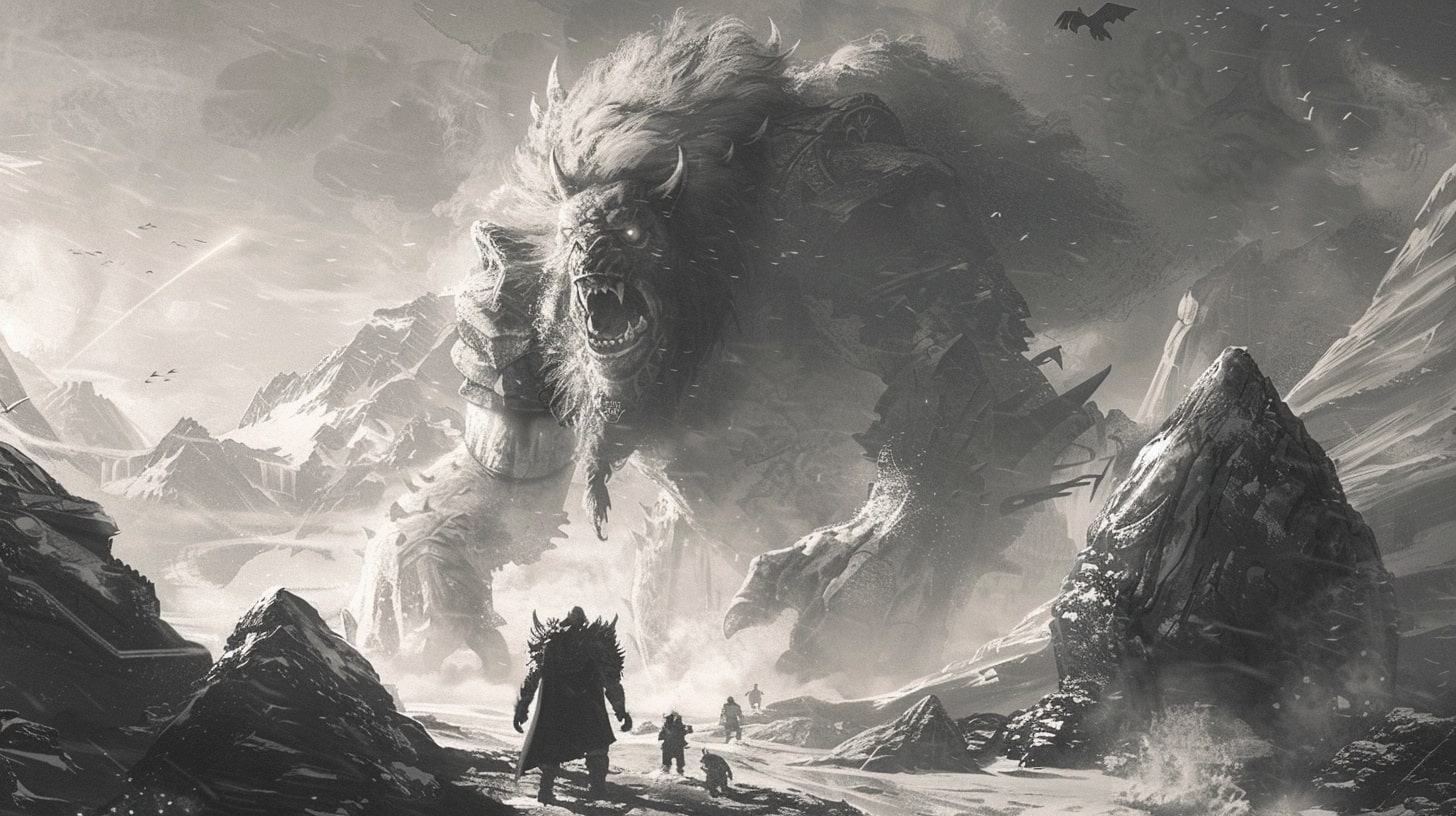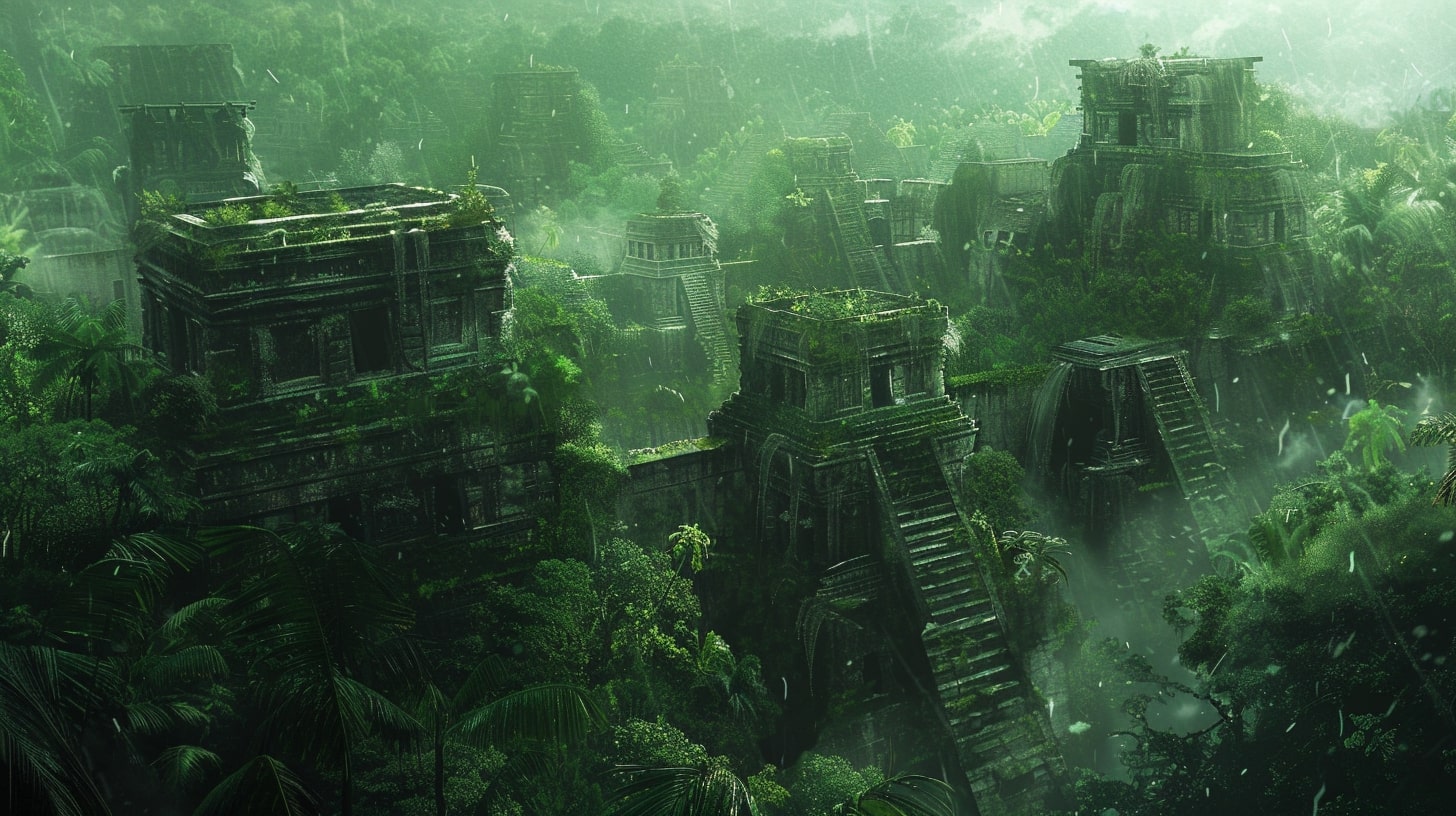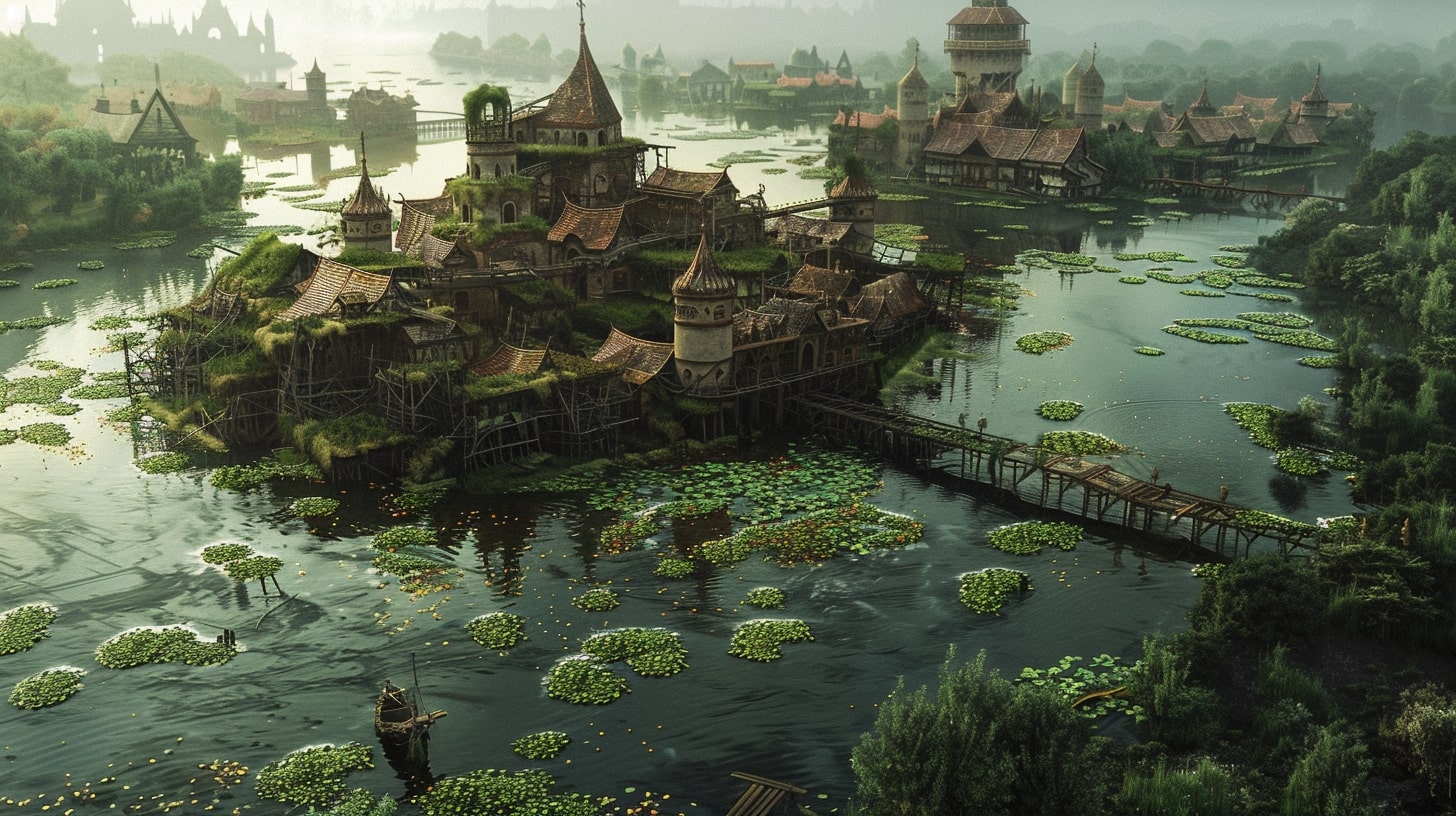The Art of Worldbuilding
In the realm of fantasy books, worldbuilding is an essential and captivating aspect that transports readers to imaginative and immersive realms. It allows you, as a fantasy author, to create unique and intricate worlds that captivate the imagination of your readers.
But how do you tackle worldbuilding technology? To do that first we have to make sure we are on the same page about worldbuilding.
What is Worldbuilding?
Worldbuilding is the process of constructing a fictional world within which your story unfolds. It involves creating every aspect of this world, including its geography, history, cultures, creatures, and even its magical systems. Through worldbuilding, you have the power to shape a vibrant and believable setting that becomes a character in its own right.
As a fantasy author, you have the freedom to mold your world in any way you desire. You can design intricate political systems, establish diverse societies, and craft magical elements that add depth and intrigue to your story. The more thought and detail you put into your world, the more your readers will be engrossed in the story and invested in its outcome.
Importance of Worldbuilding in Fantasy Books
Worldbuilding plays a pivotal role in fantasy books for several reasons. Firstly, a well-developed and immersive world captures the reader's imagination, allowing them to escape into a realm that feels tangible and alive. It transports them from the mundane to the extraordinary, offering an enchanting experience that keeps them engaged from beginning to end.
Secondly, worldbuilding sets the stage for your characters to embark on their journey. The world you create shapes their actions, beliefs, and motivations. It influences their interactions and drives the plot forward. A richly crafted world provides a solid foundation for your characters to evolve and grow, adding depth and complexity to their development.
Lastly, worldbuilding fosters a sense of authenticity and believability. When the world feels real and consistent, readers can suspend their disbelief and fully immerse themselves in the story. They become invested in the world's history, cultures, and conflicts, forging a connection that keeps them coming back for more.
Incorporating worldbuilding technology can elevate your worldbuilding process, making it more efficient and visually appealing. In the following sections, we will explore how technology enhances worldbuilding and delve into specific tools and techniques you can utilize to bring your epic realms to life.
By focusing on the art of worldbuilding and recognizing its significance in fantasy books, you are well on your way to creating a captivating and unforgettable story.

Worldbuilding Technology: The Role It Plays
In the realm of worldbuilding, technology plays a pivotal role in enhancing the creative process and bringing fantastical worlds to life. By harnessing the power of various tools and resources, you can immerse your readers in rich and intricate realms that captivate their imagination.
It's the beauty of creating things such as The Manderium Bracers.
Let's explore how technology enhances worldbuilding and the ways you can incorporate it into your fantasy worlds.
How Technology Enhances Worldbuilding
Technology empowers you to delve deeper into the intricacies of your created worlds, allowing you to craft detailed settings, cultures, and histories with ease. Here's how technology enhances your worldbuilding process:
Research and Inspiration: The internet provides a vast array of resources, from worldbuilding ideas and prompts to guides and checklists. Online communities and forums dedicated to worldbuilding offer valuable insights and feedback, helping you refine your concepts.
Mapping and Visualization: Mapping tools and software enable you to create intricate worldbuilding maps that showcase the geography, cities, and landmarks of your fictional realms. With 3D modeling software, you can visualize your world's architecture, landscapes, and characters, bringing them to life in vivid detail.
Language and Name Generation: Language and name generators aid in the creation of unique and realistic names, languages, and dialects for your fictional races and cultures. These tools help you develop a sense of authenticity and depth in your world's linguistic tapestry.
Cultural and Historical References: Technology grants you access to a wealth of cultural and historical references, allowing you to infuse your world with depth and realism. By researching different eras, civilizations, and mythologies, you can draw inspiration and incorporate elements that enrich your world's tapestry.
Incorporating Technology in Fantasy Worlds
Integrating technology into your fantasy worlds can add a unique twist to your storytelling and worldbuilding. Here are a few ways to incorporate technology seamlessly:
Magical Technology: In a fantasy setting, you can introduce technology that is powered by magic or mystical forces. This blend of ancient powers and advanced mechanisms creates a fascinating juxtaposition, adding depth and intrigue to your world.
Steampunk Elements: Steampunk-inspired technology, with its retro-futuristic aesthetic and reliance on steam-powered machinery, can be seamlessly integrated into fantasy worlds. This fusion of Victorian-era machinery and fantastical elements can add a distinct flavor to your setting.
Ancient Artifacts: Introducing ancient artifacts or relics imbued with mystical powers can be a compelling way to incorporate technology into your fantasy world. These artifacts can have a profound impact on the world's history, culture, and conflicts.
Mechanical Creatures: Inventions such as clockwork automatons or mechanical creatures can roam your world, adding an element of technological marvel while still maintaining the essence of fantasy.
By harnessing the power of technology, you can elevate your worldbuilding to new heights, creating intricately crafted realms that resonate with your readers. Remember to use technology as a tool, not a crutch, and stay consistent with the rules and logic you establish within your world. With the right blend of creativity, research, and technological resources, you can create epic realms that transport your readers to awe-inspiring worlds.

Worldbuilding Technology
To bring your fantastical realms to life, worldbuilding technology can be an invaluable tool. These tools assist in creating intricate and immersive worlds for your stories. In this section, we will explore three essential worldbuilding technologies: mapping and cartography tools, language and name generators, and cultural and historical references.
Mapping and Cartography Tools
Mapping and cartography tools are essential for visualizing and designing the geography of your fictional world. These tools allow you to create detailed maps, showcasing the landscapes, continents, oceans, and other geographical features of your world. By accurately representing the terrain and locations, these tools aid in maintaining consistency throughout your storytelling.
There are various mapping and cartography tools available, both online and offline, that cater to different skill levels and preferences. These tools often provide features such as customizable terrains, elevation indicators, and the ability to label and annotate specific areas. Whether you are a novice or an experienced cartographer, utilizing these tools can help you bring your world to life. For more information on creating captivating maps, check out our article on worldbuilding maps.
Language and Name Generators
Language and name generators are invaluable when it comes to developing unique and authentic-sounding languages, names, and phrases for your fictional world. These tools provide you with the ability to create distinct languages that reflect the cultures, races, and regions within your world. Furthermore, they help you craft names that resonate with your audience and add depth to your characters and locations.
Language and name generators often offer a wide range of options, allowing you to specify factors such as phonetic patterns, syllable structures, and even the cultural influences you want to incorporate. By utilizing these tools, you can easily populate your world with names that are consistent and immersive. For more guidance on worldbuilding, including language creation, check out our worldbuilding guide.
Cultural and Historical References
To create rich and believable cultures within your world, drawing inspiration from real-world cultural and historical references can be immensely helpful. By studying different cultures, customs, traditions, and historical events, you can infuse your world with depth and realism. These references provide a solid foundation upon which you can build unique societies and civilizations.
Exploring various cultures and historical periods can inspire you to create diverse belief systems, social structures, and political systems for your fictional world. By blending different aspects of real-world cultures, you can create something entirely new and captivating. Remember to approach cultural references with respect and sensitivity, avoiding stereotypes and cultural appropriation.
Incorporating these three key worldbuilding technologies into your creative process can greatly enhance your worldbuilding efforts. Mapping and cartography tools help you visualize your world's geography, language and name generators assist in creating authentic-sounding names and languages, and cultural and historical references provide inspiration for building vibrant cultures. By utilizing these tools, you can bring your epic realms to life and captivate your readers with immersive storytelling.
Creating Epic Realms with Technology
As a fantasy author, you have the exciting opportunity to bring your world to life through the use of worldbuilding technology. These powerful tools can help you visualize and develop your fictional realms in extraordinary detail. In this section, we will explore three essential ways technology can aid you in creating epic realms: 3D modeling software, terrain generators, and character creation and design tools.
Visualizing Your World with 3D Modeling Software
One of the most remarkable advancements in worldbuilding technology is the availability of 3D modeling software. These tools allow you to create intricate and realistic visual representations of your world. With 3D modeling software, you can design everything from towering castles and majestic landscapes to unique creatures and fantastical objects.
By using 3D modeling software, you can manipulate and view your world from different angles, gaining a deeper understanding of its geography and architecture. This visual representation not only helps you as the author but also allows your readers to immerse themselves in the richness and depth of your world. Consider incorporating this technology to enhance the visual experience of your readers.
Building Dynamic Landscapes with Terrain Generators
Terrain generators are invaluable tools for creating dynamic and realistic landscapes in your fantasy world. These tools use algorithms to generate various terrains, including mountains, forests, rivers, and more. By utilizing terrain generators, you can quickly establish the physical features of your world and ensure consistency in your geography.
With the ability to customize parameters such as elevation, moisture, and vegetation, you can fine-tune your terrain to align with your world's lore and story. Terrain generators offer a time-saving solution, allowing you to focus on other aspects of worldbuilding while still creating captivating and believable landscapes. Explore the available terrain generators to find one that suits your needs and aligns with your creative vision.
Character Creation and Design Tools
Characters are the heart and soul of any story, and technology can assist you in developing memorable and visually appealing characters. Character creation and design tools provide a wide range of options to customize the appearance, clothing, accessories, and even personalities of your characters. These tools can help you visualize your characters, making them come to life on the page.
By using character creation and design tools, you can ensure consistency in your character descriptions and develop unique and diverse individuals. These tools allow you to experiment with different combinations and styles, helping you find the perfect visual representation for your characters. Remember that while technology can aid in character design, it's important to imbue your characters with depth, personality, and motivations through your writing.
Utilizing worldbuilding technology such as 3D modeling software, terrain generators, and character creation and design tools can enhance your worldbuilding process and elevate your storytelling. However, it's crucial to keep in mind that technology should serve as a tool rather than a crutch. The true magic lies in your imagination and storytelling skills. Use these technological advancements to support and amplify your creative vision, bringing your epic realms to life for your readers to explore and enjoy.
Tips for Utilizing Worldbuilding Technology
When it comes to incorporating technology into your worldbuilding process, there are several tips that can help you make the most out of the available tools and resources. By following these tips, you can enhance your worldbuilding experience and create immersive and captivating realms for your readers.
Research and Explore Different Tools
The world of worldbuilding technology is vast and constantly evolving. There are numerous tools and software available that can assist you in various aspects of worldbuilding, from map creation to language generation. Take the time to research and explore different options to find the ones that best fit your needs and preferences.
Consider utilizing mapping and cartography tools to bring your world to life visually. These tools allow you to create detailed and realistic maps that showcase the geography and landmarks of your realm. Check out our article on worldbuilding maps for more guidance on this topic.
Additionally, language and name generators can help you develop unique and authentic names for your characters, places, and cultures. These tools can save you time and spark creativity in your worldbuilding process. Explore different language and name generators to find the ones that resonate with your vision.
Stay Consistent with Your World's Rules and Logic
While technology can be a valuable aid in worldbuilding, it's important to remember that it should serve as a tool and not dictate the rules of your world. As you incorporate technology into your worldbuilding process, make sure to stay consistent with the rules and logic you have established.
Each decision you make, whether it's in map creation or character design, should adhere to the internal consistency of your world. Utilize technology to enhance your vision and bring it to life, but ensure that it aligns with the overall tone and atmosphere you want to convey.
Use Technology as a Tool, Not a Crutch
While technology can be immensely helpful in worldbuilding, it's essential to strike a balance. Use technology as a tool to support your creative process, but don't rely on it entirely. Remember that the most important aspect of worldbuilding is your imagination and storytelling abilities.
Use technology to streamline certain aspects of your worldbuilding, such as visualizing your world with 3D modeling software or creating dynamic landscapes with terrain generators. These tools can assist you in bringing your ideas to life, but don't forget that the heart of worldbuilding lies in the depth of your imagination.
By researching and exploring different tools, maintaining consistency in your world's rules and logic, and using technology as a tool rather than a crutch, you can harness the power of worldbuilding technology to create epic and captivating realms for your readers to explore. Remember to check out our worldbuilding resources for more tips and inspiration in your worldbuilding journey.








































